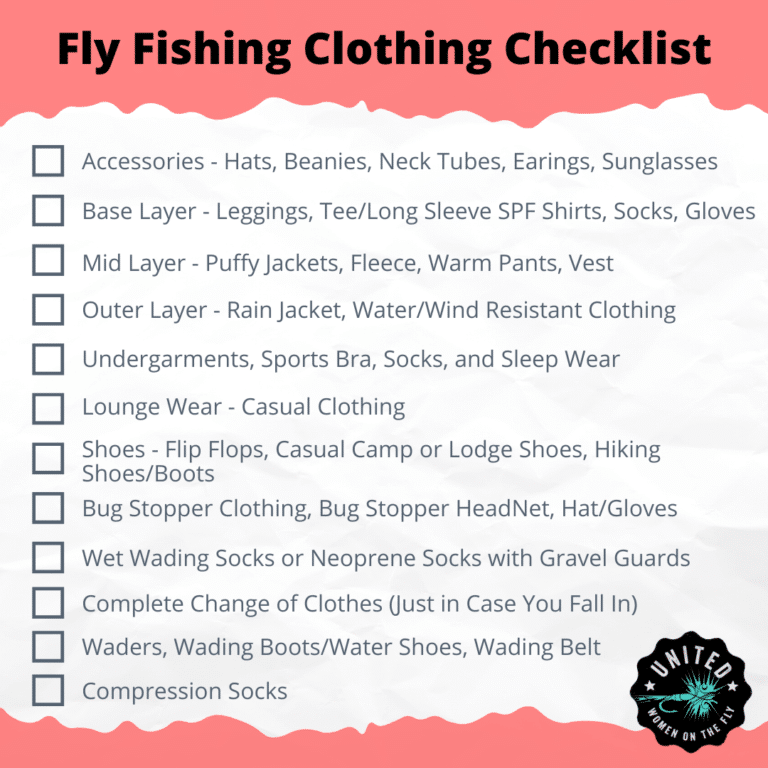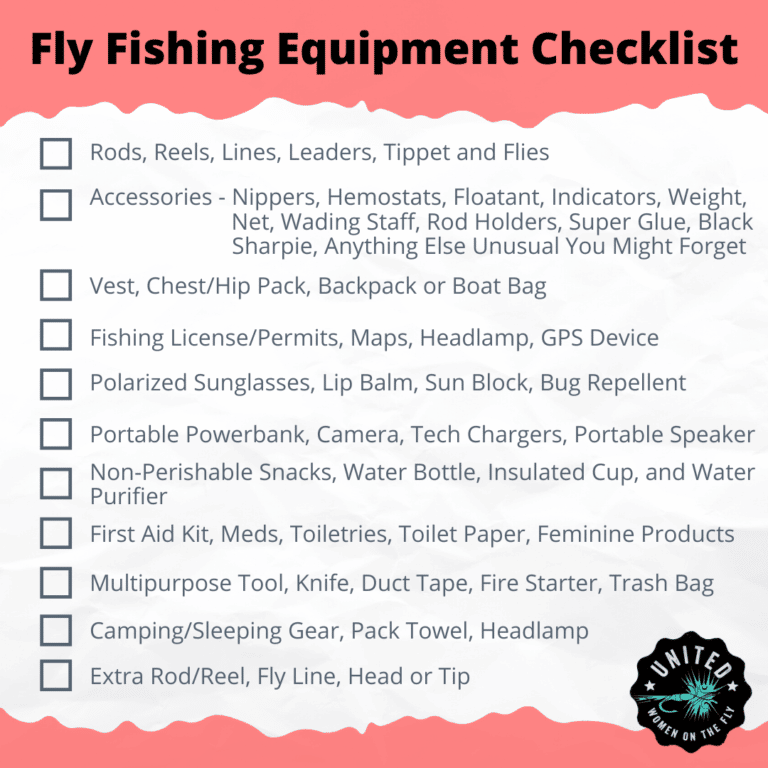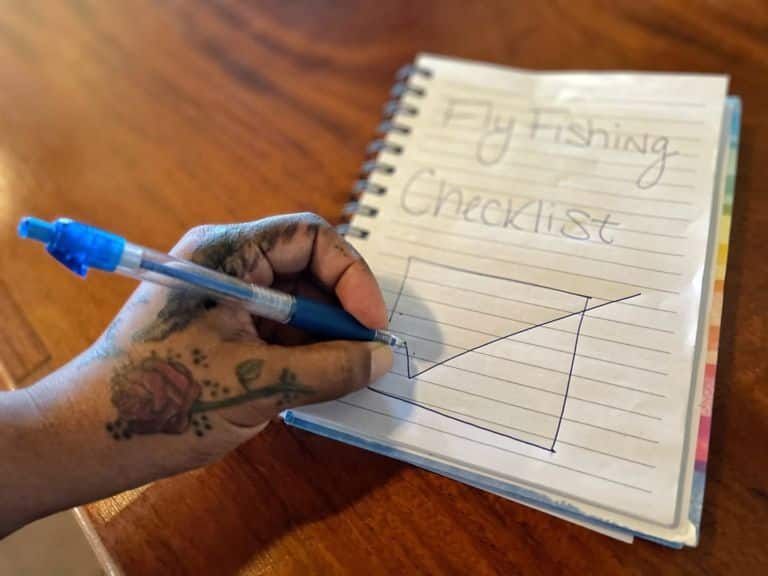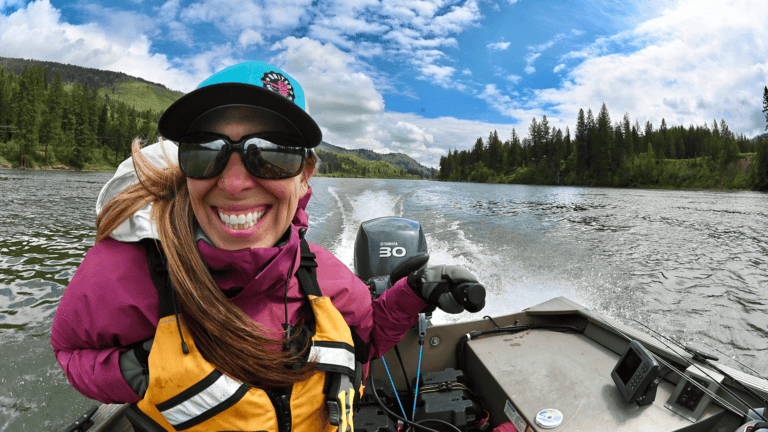The information below is a generalized packing list that you may find helpful in planning your next trip. It is not comprehensive and includes gear recommended both for warm weather and cold weather trips. Please be sure to get specific information on your destination before deciding what to take or leave behind.
Packing well for a trip is always a challenge and having the right fly-fishing gear is essential for your success and enjoyment. That said, it is also important to pack efficiently and thoughtfully, and to leave behind the extraneous gear that you will not need. Please refer to our fly-fishing gear checklist before you bring a pile of unnecessary tackle; we’ve done this for a while, and though we know how important some of your favorite gear is to you, we can help you streamline the packing and planning process by helping you leave behind the tackle that you just don’t need to bring.

Summer is quickly approaching and it’s important to pack the essentials for your next fly-fishing adventure. United Women on the Fly (UWOTF) has compiled a checklist that can be used for most fishing trips. This is a general checklist and additional items will need to be added or removed depending on the location, fishing techniques and time of year.
Clothing & Accesory
Dress in layers. Don’t forget about your sleep clothes and lounge wear. It’s always nice to change into a dry pair of clothes at the end of a day of fishing.
Compression Socks
Don’t leave home without a pair of compression socks. I wear mine on the plane, to bed and even on a boat with tennis shoes if my feet and legs swell.
Synthetic Materials and Layering
More expensive but used for the purpose to wick away moisture. Secondhand stores can be a great less expensive option. Layering smart should be comfortable and not cause constriction and hampering of movement. Constriction will cause poor circulation which in turn results in feeling cold. Cat Toy wrote a great piece about layering in her “Prepare for Winter Fly Fishing”. She describes the layering systems.
Base Layer
The prepared angler needs to dress wisely for the part. Layering begins with a first base layer next to skin made of a wool/synthetic or silk blend that have moisture wicking capabilities. Avoid cotton clothing if possible. Cozy sweatshirts, jeans, and cotton socks under waders are counterproductive because they do not remove moisture leaving you bleak and the inability to stay warm.
mid Layer
Layers on top of your base layer are articles of clothing made of polyester, wool, and other synthetics. Fleece pullovers and fleece wader pants or merino wools are exceptional choices because they are lightweight, toasty, and breathable. These layers are advantageous in trapping warmth and with the function of also wicking away moisture.
To top your inner layers, an insulated hooded puffy is another quality layer that adds wind and weather resistance. It is the best way to counter the winds and below freezing temperatures. It is a windproof outer layer that helps to trap warmth and block the elements. The hooded puffy also is very easy to stow away if you get too warm.
outer Layer
Your outer layer is your first layer of defense. If you really want to stay warm, make your outer layer a wind and waterproof shell. The ideal jacket will have a hood and vents around the armpits to allow sweat to evaporate from your interior layers. Cat prefers an outer shell made of specially engineered materials such as Gore-Tex. This quality material is built for wet protection from the snow, windproof, and breathability.
Thou shall always have a rain jacket handy. If you only learn one thing from this write-up, learn to never leave home without a rain jacket! Put that rain jacket in your daypack and have it on your airplane carry on. Too many times have I gotten off the airplane, immediately hopped on a boat and needed my rain jacket. Regardless of the weather conditions or season, a rain jacket is an absolute must!
Socks
A set of happy feet works with a comfortable two-sock system with a synthetic liner sock of poly/nylon is useful to help wick away moisture away from the skin. Over the liner, a midweight or heavyweight wool sock for warmth.
Undergarments
A sports bra is an absolute must when fishing. Consider non cotton materials for your fishing undergarments.

lounge, camp and lodge wear
It’s nice to have a dry change of clothes after your day of fishing. If traveling, consider getting clothing that is quick dry and wrinkle resistant.
Bug Stopper Clothing
Many companies offer clothing with bug stopper protection. This material is usually impregnated with Pyrethrum, a powerful, rapidly acting insecticide originally derived from the crushed dried flowers of the daisy Chrysanthemum. The repellency of Insect Shield apparel is EPA-registered to last through 70 launderings, the expected lifetime of a garment.There are DIY options for adding bug stopper protection to your own clothing. Follow the manufacturer instructions.
Shoes
Usually, you can get away with a pair of flip flops and wading or flats boots. Don’t forget to break in those boots a week or two before the trip. This could prevent a lot of pain and blisters. A pair of camp or lodge shoes might also be a handy addition.
Don't forget to break in those boots a week or two before the trip.
Wet Wading Socks or Neoprene Socks with Gravel Guards
Whether your wet wading in the summer or walking the flats. Proper footwear is imperative. With this footwear you should also have socks. Many companies make wet wading socks that are high and designed to get wet. Neoprene socks with gravel guards are great because they prevent rocks, sand, and gravel into your shoes.
Waders
I often wear my waders in three seasons. The rebellious ones might stop wearing waders at a certain time of the year. You could see me in a pair of waders in August. Regardless if you’re on a summer trip, having the option to wear your waders is important. There could be a cold front, fishing in a deep dark canyon, wading in cold tailwaters or you might need the waders for snake protection as they do in Australia. If you have waders, in most circumstances its best to error on the side of bringing them with you.
Wading Boots
There are two types of soles for your wading boots. Felt and Vibram. You must know the regulations where you are fishing. Is felt bottom boots legal? There are many places in the world where felt soles is illegal.
You can also have studs, cleats, or bars to the bottom of your boots for further wading steadiness. See the stud blog to know which studs to use for specific types of rocks. Some manufacturers have a pair of boots that you can change out the bottoms. You also want to consider if the studs on your boots will be allowed in certain boats or in airplanes?
Change of Clothes
Always have a complete change of clothes with you just in case you or your fishing partner fall into the water. When fishing from a boat, I usually carry more clothes, as I have more room. If walk and wade fishing, carry a full change in your car or a couple pieces in your backpack if you’re out for a full day hike. Hypothermia can happen in the summer.
Summer or Winter Wading Considerations
Yes, your Chaco’s or sandals are tempting in the summer when wading but let’s think about your safety. I’ve pulled off two big toenails slipping in the river and ripping my nails up from rocks. Closed toed and ankle support is important even when wet wading during the summer. If in your budget, having a second pair of slightly larger boots to allow more circulation can be key to happy warm feet. Winter wading boots should fit comfortably with winter socks so blood can flow to your feet and toes to stay warm. Felt soles are not recommended due to snow clumping. Rubber-soled boots are a must.
Closed toed and ankle support is important even when wet wading during the summer.
Accessories
Don’t forget your favorite UWOTF Hat. It’s never a bad idea to bring a beanie and puffy on most fishing adventures. Neck tubes are great for sun and bug protection, keeping your hat on while motoring from flat to flat or adding a pop of color for your fish of a lifetime photo. There’s no shame in jazzing up your fishing outfit with your favorite pair of earrings.
Sunglasses
Have the right lens color for your fishing conditions.

Fly Rods
Every fishing location, species and technique will require a certain type and weight fly rod. Be sure to research the specifics for your trip. There are two types of fly rods, one that’s broke and one that’s not broken yet. If you have the financial means, it’s always a good idea to bring an extra fly rod, fly line, head, or tip with you just in case.
Fly Reels
Large arbor reels are preferred for saltwater fishing destinations as you can pick up more line when reeling. Small arbors are preferred when using larger diameter lines such as a scandi or skagit head as there is more room for backing, running line, and shooting heads.
Leders, Tippet and Flies
It’s a good idea to bring a few extra leaders, spools of tippet and flies. Check your tippet spools before you go to make sure you’ll have adequate amount of tippet for your trip.
Fly Fishing Gear Accessories
Nippers and pliers are the two must haves for any type of fishing adventure. If fishing in salty conditions, be sure to have accessories that won’t rust. The additional accessories depend on your fishing techniques.
Vest, Chest/Hip Pack, Backpack or Boat Bag
You’ll need some sort of carrying device to put your gear, change of clothing, water bottle, snacks, and anything else for the day. A waterproof backpack is highly recommended. Yes, the waterproof zippers make this backpack more expensive and there are not a lot of extra pockets, but a waterproof backpack can be used as an airplane carry on, boat bag or used while hiking up a remote river. This will be an investment that will last a very long time.
Fishing License/Permits, Passport, Driver's License
Know your regulations!! Purchase a fishing license and/or fishing permit before you leave your home. Verify with the regulations if having a screenshot of your license on your phone is legal. Some states have apps, some require a printed license. Know your regulations!
Maps, GPS Device
Study the area that you will be traveling to. Screenshot, purchase or print out maps of the area. Although expensive, a Garmin InReach is a great life saving device. You can turn your service on and off based on your trips. Most plans have texting and social media updates available. The SOS button will always work regardless of your service plan. The InReach also works as a GPS for marking way points and getting your current location to reference the Lat/Long or UTM coordinates to a map.
Global Rescue Insurance
If you are traveling remote or internationally, it’s a good idea to have some sort of rescue insurance. United Women on the Fly is a partner with Global Rescue. You can purchase your annual rescue insurance and/or your destination rescue and travel insurance at https://globalrescue.com/unitedwomenonthefly/.
Lip Balm, Sun Block, Bug Repellent
Take care of your lips!! Be sure your lip balm has SPF in it. There are two things that can be prevented. Sunburns and dehydration. Take care of yourself.
Portable Powerbank, Camera, All Tech Chargers, and a Rechargeable Speaker
A portable powerbank can be an inexpensive and lightweight item to throw in your backpack to recharge your devices. If you’re like me and like to take a lot of photos, videos and listen to music then this is a must! Have an extra charging cord in your backpack so you don’t forget to pack it every day. Life on the water is not complete without music. A small, waterproof, rechargeable speaker is always on my list.
Non-Perishable Snacks, Water, Water Bottle, Insulated Cup and/or Water Purifier
Nuts, protein bars, jerky, dried fruit, peanut butter snack packs are all good nutritional snacks to keep on hand. Airlines aren’t currently serving food on the plane so these snacks will also prevent hangry traveling. Kick Plastic and bring a reusable water bottle with you on all your adventures. Most guide services now bring one larger container of water to refill your water bottle. An insulated cup for coffee and your favorite beverage is worth the extra weight in your luggage. There’s nothing like a warm to go cup of coffee when you’re running up a river on a brisk morning. I never leave home without my UV Water Purification Pen. Especially when traveling internationally. It’s lightweight, recharges via USB. One thing to note with the UV Pen is you need a clear wide mouthed water bottle for it to work. The insulated water bottles won’t work.
First Aid Kit and Medications
Regardless of if it’s larger or small, a first aid kit is always a good idea to have on your fishing adventure. Hook injuries, fly line burns and bug bites are most common. I never leave home without Baby Aspirin (pain and heart attack), Ibuprofen, Benadryl, Dramamine, waterproof blister band-aides, cortisone cream, Koban or adhesive wrap, eye drops and chap stick. Don’t forget to pack it in, pack it out.
Toiletries, Toilet Paper, Body Wipes and Feminine Products
There is no shame is wearing make-up and being yourself on your fishing adventure. Do You!! Toilet Paper and Body Wipes should be staples on your fishing packing list. Wipes can be used to clean your fly line or your body.
Other Important Essential Tools
Having a few additional essential tools is a must. Headlamp should never be left home. Either a multipurpose tool or knife, duct tape, superglue, fire starter (check out our Cotton Balls and Vaseline YouTube Video) and trash bag are just a few items to add to your list. A black sharpie is great because you can alter your flies if needed and write a message if needed.
Depending on your adventure camping and sleeping gear might be required. I always bring my down stuff pillow and travel sleeping bag from Sea2Summit with me on every trip around the world. A pack towel can also be used for a blanket to sit in the sand or on the shore, cover up if you are getting burned or to dry off.
This concludes the comprehensive United Women on the Fly checklist. This is a general checklist and additional items will need to be added or removed depending on the location, fishing techniques and time of year. Happy fishing and be sure to tag #unitedwomenonthefly on your adventures. H






